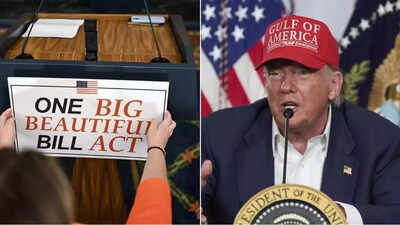
How Trump’s ‘Big Beautiful Bill’ triggers cuts that could reshape public schools for millions of kids.
In a landmark move with far-reaching consequences for American children and public education, the U.S. Congress has passed President Donald Trump’s sweeping tax and domestic policy bill. Branded by the president as the “big, beautiful bill,” the legislation marks a sharp realignment of federal priorities — cutting deeply into healthcare and nutrition programs for low-income families while expanding immigration enforcement and promoting private school choice.The nearly 900-page bill is expected to be signed into law by Friday. It includes historic cuts to Medicaid, which schools rely on to fund essential health services; changes to SNAP, which threatens access to free school meals; and a new tax-credit scholarship program aimed at subsidizing private education. Meanwhile, a surge in immigration enforcement funding is expected to sow fear and instability in school communities with large immigrant populations.Education leaders and policy analysts warn that the cumulative impact could reshape the daily reality for millions of children — from fewer nurses and counselors in schools, to growing food insecurity, rising absenteeism, and widening inequality in access to quality education. While supporters argue the bill promotes efficiency and parental choice, critics say schools will be left to absorb the consequences.
Medicaid cuts to hit school health staff
The bill imposes major reductions on Medicaid, a federal program that provides healthcare for low-income individuals. Schools depend heavily on Medicaid funding to pay for nurses, counselors, speech therapists, and other health professionals.A recent national survey of 1,400 school officials found that nearly 90 percent used Medicaid funds to cover salaries of school-based health workers. A significant number also used the funds for assistive technology for students with disabilities.
Without this support, schools may be forced to reduce services or lay off staff.Rural schools, which serve higher percentages of Medicaid-enrolled children, could face the sharpest impact.
SNAP restrictions threaten access to school meals
The bill changes eligibility criteria for the Supplemental Nutrition Assistance Program (SNAP), potentially removing hundreds of thousands of families from the program. Children in SNAP households automatically qualify for free meals at school.
If families lose SNAP access, schools may see a drop in meal participation and federal reimbursements.Advocacy groups warn that hunger in classrooms could increase, particularly in low-income districts. Schools may also struggle to process additional paperwork for free meal applications if families no longer qualify automatically.
Immigration funding spike stirs fear in schools
The legislation allocates $44 billion to boost immigration enforcement. This includes new agents for Immigration and Customs Enforcement (ICE) and grants for state and local authorities to assist in deportations.Schools in immigrant-heavy areas have already reported higher absenteeism and increased stress among students during federal raids. Research from Stanford University showed that immigration raids earlier this year caused sharp declines in daily school attendance, especially among young children.
New voucher plan backs private schools
The bill creates a tax-credit scholarship program to subsidize private school tuition. Individuals will receive a tax break for donations made to scholarship-granting organizations.
The measure is optional for states, and many Democrat-led states are expected to opt out.The cost of the program remains unclear, as there is no cap on tax credit payouts. A prior version of the bill proposed a $5–6 billion ceiling.
Workforce Pell Grants approved, tax credit disappoints
From 2026, low-income students will be able to use Pell Grants for short-term job training programs. These programs must meet criteria for high-skill or in-demand careers, as defined by state education boards.
However, the bill’s updated child tax credit, which increases to $2,200 per child, excludes many families with little or no income. Analysts say this version offers fewer benefits than the temporary pandemic-era expansion, which had reached a broader section of low-income households.

 5 hours ago
46
5 hours ago
46




























 English (US)
English (US)